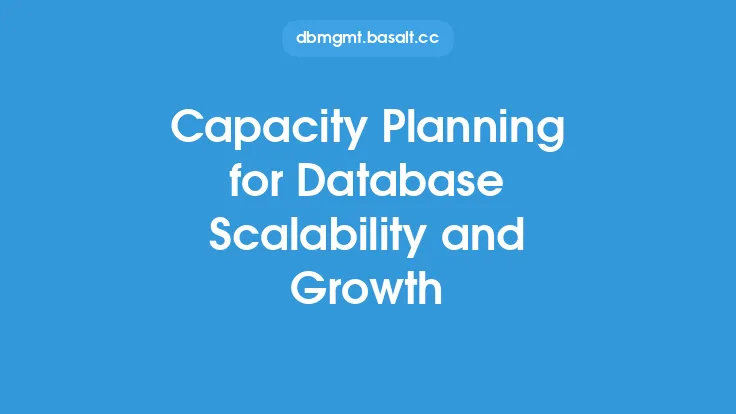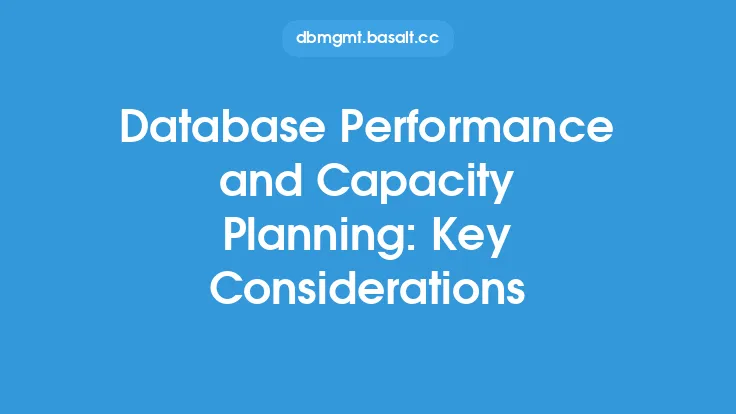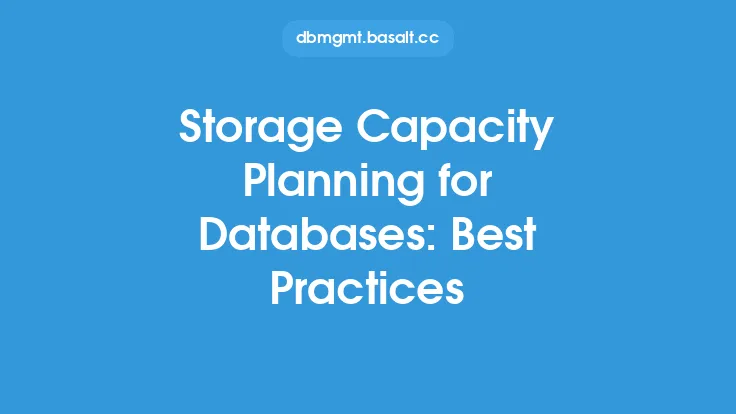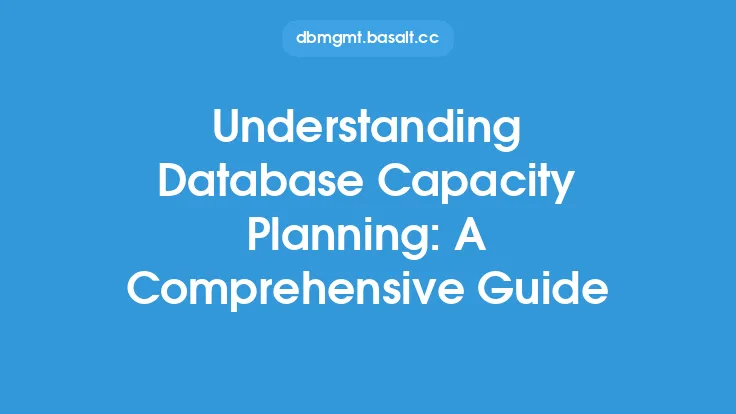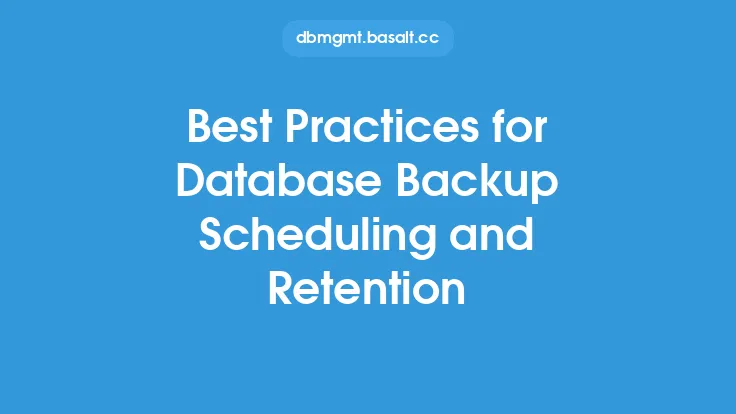When it comes to designing and managing a database, one of the most critical aspects to consider is sizing and capacity planning. This involves determining the optimal amount of resources, such as storage, CPU, and memory, required to support the database workload. Proper sizing and capacity planning are essential to ensure that the database can handle the expected load, provide optimal performance, and minimize downtime. In this article, we will discuss the best practices for database sizing and capacity planning, highlighting the key considerations, methodologies, and tools involved.
Introduction to Database Sizing
Database sizing refers to the process of determining the optimal amount of resources required to support a database workload. This includes estimating the storage requirements, CPU, memory, and I/O bandwidth needed to handle the expected load. Database sizing is a critical aspect of capacity planning, as it helps to ensure that the database can handle the expected workload, provide optimal performance, and minimize downtime. A well-sized database can help to improve performance, reduce costs, and increase overall efficiency.
Key Considerations for Database Sizing
When it comes to database sizing, there are several key considerations to keep in mind. These include:
- Workload characteristics: Understanding the workload characteristics, such as the number of users, transactions per second, and data volume, is essential for determining the required resources.
- Data growth rate: Estimating the data growth rate is critical for determining the required storage capacity and planning for future growth.
- Performance requirements: Understanding the performance requirements, such as response time and throughput, is essential for determining the required CPU, memory, and I/O bandwidth.
- Availability and reliability: Ensuring high availability and reliability is critical for mission-critical databases, and requires careful planning and sizing of resources.
Methodologies for Database Sizing
There are several methodologies for database sizing, including:
- Benchmarking: Benchmarking involves running a series of tests to measure the performance of the database under different workloads.
- Modeling: Modeling involves creating a mathematical model of the database workload and using it to estimate the required resources.
- Simulation: Simulation involves creating a simulated environment to test the performance of the database under different workloads.
- Capacity planning tools: Using capacity planning tools, such as database management system (DBMS) built-in tools or third-party software, can help to simplify the sizing process and provide more accurate estimates.
Database Sizing Metrics
When it comes to database sizing, there are several key metrics to consider. These include:
- Storage capacity: The total amount of storage required to support the database workload.
- CPU utilization: The percentage of CPU resources used by the database workload.
- Memory utilization: The percentage of memory resources used by the database workload.
- I/O bandwidth: The amount of I/O bandwidth required to support the database workload.
- Response time: The time it takes for the database to respond to a query or transaction.
- Throughput: The number of transactions or queries that the database can handle per second.
Best Practices for Database Sizing
To ensure accurate and effective database sizing, follow these best practices:
- Monitor and analyze workload: Continuously monitor and analyze the workload to understand the resource requirements and identify areas for optimization.
- Use capacity planning tools: Use capacity planning tools to simplify the sizing process and provide more accurate estimates.
- Consider data growth rate: Consider the data growth rate when sizing the database to ensure that it can handle future growth.
- Test and validate: Test and validate the database sizing estimates to ensure that they are accurate and effective.
- Continuously review and update: Continuously review and update the database sizing estimates to ensure that they remain accurate and effective over time.
Common Challenges in Database Sizing
When it comes to database sizing, there are several common challenges to consider. These include:
- Uncertainty: Uncertainty about the workload characteristics, data growth rate, and performance requirements can make it difficult to accurately size the database.
- Complexity: Complexity of the database workload, such as multiple applications and users, can make it difficult to accurately size the database.
- Limited resources: Limited resources, such as budget and personnel, can make it difficult to accurately size the database.
- Rapid growth: Rapid growth of the database workload can make it difficult to accurately size the database and plan for future growth.
Conclusion
In conclusion, database sizing and capacity planning are critical aspects of database design and management. By following the best practices outlined in this article, database administrators can ensure that their databases are properly sized and can handle the expected workload, provide optimal performance, and minimize downtime. Remember to continuously monitor and analyze the workload, use capacity planning tools, consider data growth rate, test and validate, and continuously review and update the database sizing estimates to ensure that they remain accurate and effective over time.
